
We collect basic website visitor information on this website and store it in cookies. We also utilize Google Analytics to track page view information to assist us in improving our website.
Written by: Cole White
People used to view wetlands as a waste of space: they can't be built, they can't be easily traversed by boat, and they aren't profitable for most types of agriculture. So why are wetlands so important?
Now we're learning that wetlands are some of the most biologically productive sites on our planet. They hold water in times of flood or drought, purify the environment, and sequester carbon from the atmosphere. I've heard them called 'Nature's Kidneys'. They sustain life by providing essential year-round or seasonal habitat for many species of fish, birds, and other animals. They are also home to plant communities found nowhere else, and have a breathtaking beauty all their own.
Events like World Wetlands Day (Sunday, February 2) work to shift these attitudes, and effect change.
As a small celebration of World Wetlands Day, I conducted an informal poll of my ecologist colleagues to find out what everyone's favourite wetland plant was. The results were fun and I hope our appreciation of these plants inspires you to learn more about them:
Marsh Marigold(Caltha palustris) 'I love Marsh Marigold because the flowers are like little bursts of sunlight when walking through a wetland or swampy woods.'
|
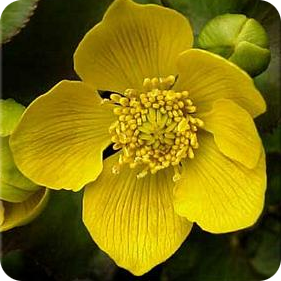 |
Turtlehead(Chelone glabra) 'Mostly because it looks like a turtle!'
|
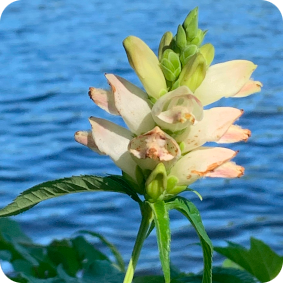 |
Bog Buckbean(Menyanthes trifoliata) 'Bog Buckbean looks like a giant clover, and I've found it in Ontario, Quebec and Nova Scotia.'
|
|
Buttonbush(Cephalanthus occidentalis) 'The flowers are just so striking... and look like pom-poms or fireworks. They're such a lovely surprise to find.'
|
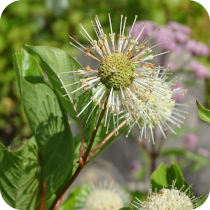 |
Skunk Cabbage(Symplocarpus foetidus) 'Foul-smelling but a very reliable groundwater seepage indicator; quite unusual in that its flowers can actually melt the snow so that it can get a head start on flowering and pollination by flies and beetles in the early spring.'
|
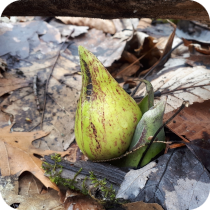 |
Any Type of Bladderwort(Utricularia cornuta shown here) 'They have beautiful flowers, they float on the water surface and they eat bugs. I think that's pretty neat.'
|
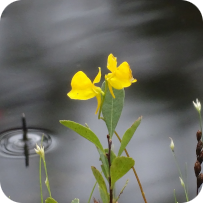 |
Cranberry(Vaccinium macrocarpon) 'It reminds me of Thanksgiving at my family cottage.'
|
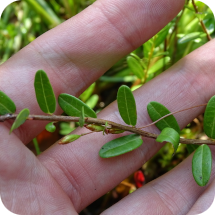 |
Common Pipewort(Eriocaulon aquaticum) 'Stands of common pipewort look like drifts of delicate white pompoms hovering over shallow water. The flower is intricate and the plant is unassuming. Quite lovely.'
|
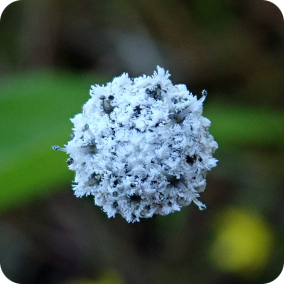 |
Pitcher Plant(Sarracenia purpurea) 'Carnivorous -- the story last year that a population in Algonquin consumes salamanders was a bit disconcerting but cool!'
|
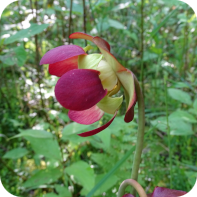 |
We hope you're inspired to learn more about the strange and wonderful plant life growing in our country's wetlands. Check out the links below, or visit the Network of Nature Search Page to discover more species.
• World Wetland Day 2020: Official Page
Find a World Wetlands Day event near you, learn more about wetlands, get free educational materials and infographic cards to share on your social media accounts.
• The Secret World of Bog
This photojournalist's foray into West Coast coastal temperate rainforest bogs was published in 2016 and won a gold award in the Canadian Online Publishing Awards. The photos in this beautiful piece show the area's flora on all scales, from peat moss fasicles to forests of stunted pines and cedars.
• Pitcher plants discovered snacking on baby salamanders in Ontario park
A recent CBC stories shows that our native carnivorous plants are more voracious than we might think.
• Treasured Wetlands of Nova Scotia 2019 Story Map
An interactive look at wetland habitats in Nova Scotia. If you're not on the East Coast right now, here's a way to visit these sites virtually!
Join our email list to receive occasional updates about Network of Nature and ensure you get the news that matters most, right in your inbox.